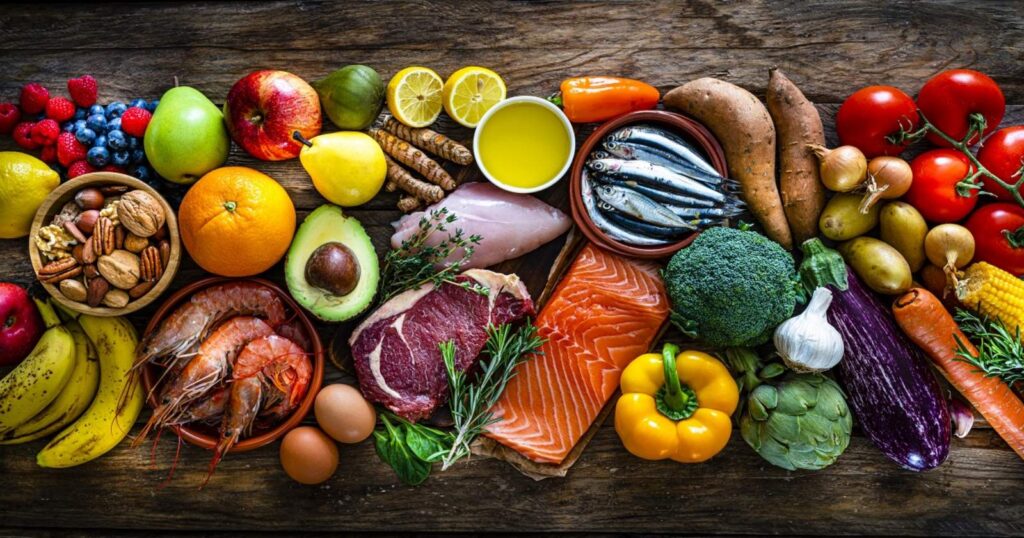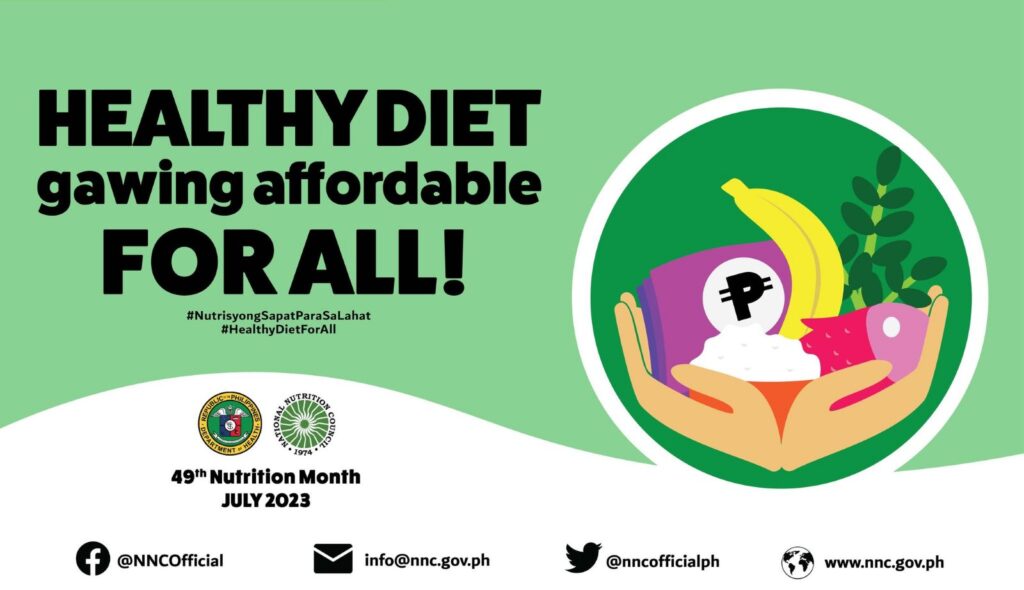JULY is National Nutrition Month. Our country marks this occasion as a time to educate the public on the importance of making informed food choices and developing sound eating and physical activity habits.
In case you didn’t make eating healthier your new year’s resolution, now is the time to make a positive change. Make a commitment to yourself to develop healthy habits.
It’s easier than you may think to begin incorporating small steps that often make a significant impact. The key to nutritious eating is to think of this as a lifestyle change and not something temporary to achieve a short-term goal.
Start with the basics

Eating right doesn’t have to be complicated. A healthy eating plan emphasizes fruits, vegetables, whole grains, low-fat or fat-free dairy and includes lean meats, poultry, fish, beans and nuts. It is also low in saturated fats, trans fats, cholesterol, salt and added sugars.
Make calories count by thinking nutrient-rich rather than “good” or “bad” foods. Most choices should be packed with vitamins, minerals, fiber and other nutrients and lower in calories. Be aware of portion sizes. Even low-calorie eatables can add up when portions are larger than you need.
Focus on variety by eating an assortment of fare from all the food groups. Fruits and vegetables can be fresh, canned or frozen. Look for locally grown produce that are in season. Vary protein choices with more fish, beans and peas. Include at least three servings of whole grain cereals, breads, crackers, rice or pasta every day.
Choose low-fat cooking methods such as steaming, stewing, simmering, boiling, scalding or cooking with non-stick frying pans. Also reduce the use of frying and deep-frying.
Herbs and spices can be used to add delicious flavors without the need for salt or oil.
Drinking enough water is also very important for your health. Most of your fluid needs are met through the water and beverages you take. You can get some fluids through the foods that you eat – especially foods with high water content like fruits and veggies.
Make the most of family mealtime. Eating meals together provides the opportunity to help children develop a healthy attitude toward food. It also enables parents to serve as role models, introduce new edibles and establish a regular chowtime.
Take time out to enjoy eating, away from screens and other distractions. You are less likely to overeat if you ingest food slowly and savor every mouthful.
Balancing physical activity and a healthful diet is your best recipe for managing weight and promoting overall health and fitness. Scientists have long known that exercise is good for a healthy body, but research has shown it’s also important for a healthy mind.
The US Department of Health and Human Services recommends that people between the ages of 18 and 64 engage in at least 150 minutes of moderate physical activity or 75 minutes of vigorous physical activity each week, as well as muscle-strengthening activities at least twice a week.
The good news is even if you can’t get there right now, adding even a little bit will help.
Research published earlier this year showed that even 11 minutes of exercise a day can lower your risk of cancer, cardiovascular disease or premature death.
Remember that everyone has to start somewhere and even short walks help. Walking is a great way to get the blood circulating well throughout your body, it’s good for your heart and muscles and the fresh air and sunshine are good for the immune system. Another bonus of walking is that it will help your body absorb more natural Vitamin D from the sun. Vitamin D is crucial for the immune system and overall wellbeing.
Even light strength training like some forms of yoga and Pilates can result in some major physical benefits. When you work to strengthen your muscles, those muscles will be better able to protect you from injury from slips and falls, will improve your balance and can help strengthen your bones. Plus, it helps with weight management and can even improve your energy level.
Make healthy eating delicious
Incorporate more fruits, vegetables, whole grains and dairy into your diet with some of these tasty ideas:
Try topping a pizza with peppers, mushrooms, broccoli, spinach or pineapple.
Serve whole grain waffles, pancakes or bread toast with fruits such as berries, apples or peaches.
Whip up a smoothie for breakfast or snack using a variety of ingredients including low-fat milk or yogurt, frozen fruit and 100 percent juice.
Roll up roasted vegetables and low-fat cheese in a whole-grain tortilla for a healthy veggie wrap.
Top a baked potato with salsa, broccoli and low-fat cheese or beans.
Heat up a cup of tomato or vegetable soup for a quick afternoon snack.
Put chopped or grated veggies such as carrots or spinach into main dishes like lasagna or meatloaf.
Stock your fridge with fresh and ready-to-eat fruits and vegetables so you always have a quick and healthy snack or side dish on hand.
2023 theme

The theme for this year’s celebration, “Healthy diet gawing affordable for all,” centers on making healthy diets more accessible in order to help improve the well-being of Filipinos and building resilience against malnutrition.
Malnutrition, according to the National Nutrition Council (NNC), is a serious problem in the Philippines. The NNC said about one in three Filipino children under the age of five is stunted, meaning they are too short for their age. Stunting can lead to a number of health issues, including impaired cognitive development and increased risk of chronic diseases later in life.
Milagros Elisa Federizo, Metro Manila nutrition program coordinator at NNC, said around 35 percent or four out of 10 Filipino families in the country are unable to eat nutritious food.
There are a number of reasons malnutrition is so common in the country. One is poverty. Many families cannot afford to provide their children with a healthy diet. Another cause is lack of access to clean water and sanitation. These factors can make it difficult for people to get the nutrients they need.
Federizo added that while some 75.2 million Filipinos do not partake in a healthy diet, enjoying such fare need not be heavy on the budget, as there are ways to have proper nutrition at a minimal cost. These include growing vegetables in containers, engaging in breastfeeding for babies up to two years old, including greens in one’s plate and adding an egg to your diet.
Making nutritious foods more affordable for everyone is important. Eating healthy can help reduce the risk of chronic diseases like heart ailment, stroke and cancer. It can improve cognitive function and boost energy levels. It can make one feel better and have more self-esteem.
Commit to your health
National Nutrition Month means something different for everyone. Whether it’s low carb, vegetarian, pescatarian or paleo, people are nourishing their bodies in ways that make them feel good and align with their personal convictions.
Some will debate the merits of one diet over another, but the truth is there’s more than one way to eat nutritious foods. Most will agree, however, that buying fresh, locally-sourced ingredients is ideal and people are paying closer attention to labels.
Experimenting with comestibles and sampling new cuisines can be a wonderful experience but always consult with your doctor before making any long-term dietary decisions. Cholesterol, allergies and other nutritional sensitivities may warrant special care when starting a new eating plan.
Whatever steps you take, make it a priority to determine which foods make you feel good and fuel your body. Enjoy everything in moderation but sticking to a healthy eating plan can improve your sense of well-being and prolong your life.





